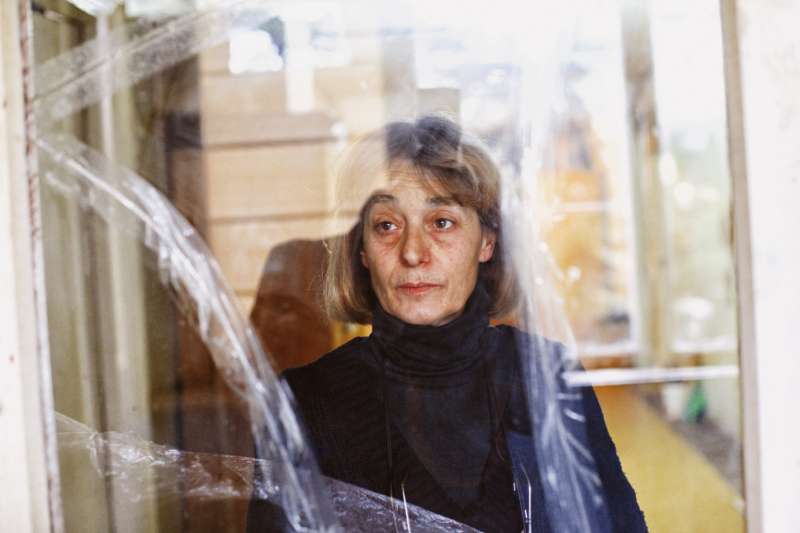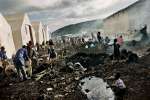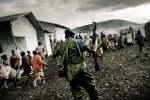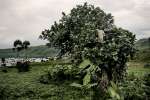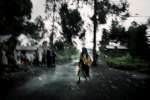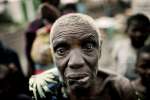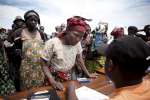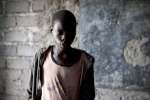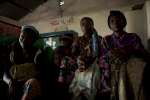After 23 years, still hoping for a better future
News Stories, 30 June 2015
With the aim of ensuring the voices and perceptions of internally displaced people on voluntary return and other long-term solutions be heard, UNHCR commissioned an Intentions Survey among IDPs in Georgia. The survey was carried out by the Institute of Social Studies and Analysis (ISSA). Two thousand and one (2,001) internally displaced persons were interviewed by ISSA between October-December 2014 in Tbilisi and 10 regions of Georgia. The survey accounted for IDPs originating from all districts of Abkhazia and South Ossetia currently living in displacement in various housing conditions, including collective centers, cottage settlements, and private housing.
By commissioning this survey, UNHCR aimed to de-mystify the issue of voluntary return of internally displaced persons in Georgia and to place the issue of voluntary return in the context of local integration and relocation as durable solutions. The results of the survey provide an evidence base for future action. UNHCR suggests the survey results not be looked at through a political lens, but help focus on what the displaced people really want. Their wishes and intentions are diverse and thus the response needs to be multi-faceted to take account of the complex considerations that drive the search of the internally displaced in Georgia for the most appropriate durable solution.
Mr. Vincent Cochetel, Director, UNHCR Regional Bureau for Europe, explains the purpose of the survey: "Many years after any conflict, it is always very difficult for people to make up their minds about returning voluntarily or not. This is not a decision that those affected by conflict take lightly. People who have been displaced outside or inside their own country always need accurate information. A key pre-requisite for people to make an informed choice is their ability to move without obstacle to the place from which they have been displaced. When discussing voluntary returns, it is important to focus on facts and on people's needs, not on theoretical considerations or myths. It is also important to understand the concerns of everyone as well as the potential fears, in particular of the affected people, not only those displaced, but also those of the host communities to which some people would return voluntarily.
An intentions survey is a standard tool used to assess who has the intention to return voluntarily to their area of origin and who wants to stay where they are. The survey includes the sort of information that IDPs have or do not have in order to make a decision. It will also include information about those who feel integrated where they are. Why do we use this tool? It is very simple; we should not have to decide for the displaced persons what the best solution is for them. I hope that this intentions survey will help us to listen to their voices and to their intentions."
Dali Kalandia, 60, is one of some 260,000 IDPs who were forced to flee Abkhazia and South Ossetia during the armed conflicts in the early 1990s and in 2008. She took part in the survey with the hope that her voice would be heard. Wife of the late famous poet Rene Kalandia; she left her decent life, relatives, friends and her home in Sukhumi. She has spent the past 23 years living in displacement with her family in one tiny room of a collective center in Tbilisi, believing that a better future is within reach: "For us IDPs it very important that we are asked how we see our future, what we want. All those things matter and will be considered by those who can really make changes. I'm sure that our brothers and sisters in Abkhazia and South Ossetia are thinking the same: that everybody has a right to live in their land and home. For the last 23 years I have just one dream, to come back to my Sukhumi. You know that hope is the last to die… " said Dali Kalandia after answering all the questions of the survey.
Questions were posed to interviewees regarding the three main durable solutions options for internally displaced persons: (i) voluntary return: sustainable and voluntary return to the area of origin; (ii) integration: sustainable local integration in areas where internally displaced persons have taken refuge; (iii) relocation: sustainable settlement/integration in another part of the country.
Given the opportunity and under conditions perceived as favorable, 88.3%, of respondents want to return voluntarily to their area of origin. 2.6% of IDPs interviewed indicated that they are prepared to return voluntarily under the current circumstances. Emotional connections, property ownership as well as the possibility to be with relatives and friends and to visit grave sites were cited as important reasons why IDPs want voluntarily to return to Abkhazia and South Ossetia.
More than half of respondents (57.3%) feel fully integrated where they live at present. A third (33.3%) feel partially integrated, while 8.3% – feel that they are not integrated. IDPs living in Tbilisi attest to a higher level of integration than those living in other towns and in villages. In general, urban locations appear to support integration of IDPs more than rural areas. According to IDPs, full integration is possible if they are provided with, first of all, livelihoods (46.3%) and a house/apartment in good condition (20.4%) and medical services (10.7%). One of the most pressing problems among IDPs is the inability to visit family members, relatives, friends and acquaintances in the area of origin.
50.9% of respondents do now own a house, apartment or plot of land in the territory controlled by Georgia. 57.1% of IDPs said that they do not want to relocate to another area within the territory controlled by Georgia from their current place of residence. Most of those wishing to relocate would like to move to a large town. IDPs living in Tbilisi expressed the least desire to move to a different location.
"Two thousand and one (2,001) internally displaced persons in Georgia have shared their aspirations, thoughts and feelings regarding their future. For many of them, this was an important step in their own reflection process on returning home, integration, and relocation in displacement. While conducting a survey sounds like a very technical exercise, for the IDPs involved it was an emotional journey as interviewers steered women, men, girls and boys through the 63 questions of the six-page questionnaire. IDPs trusted the survey process and opened their doors, hearts and minds to ensure that the survey results will help to shape their future destiny in a way that reflects their desires"- says Ms. Simone Wolken, speaking for UNHCR in the South Caucasus.
The fact that this survey was conducted, the survey methodology, the way the survey was conducted and the manner in which the survey results were compiled and presented in this report reflects UNHCR standards of best practice globally.
Through this survey and report, internally displaced persons have spoken. Now it is up to all stakeholders to support the realization of durable solutions.




